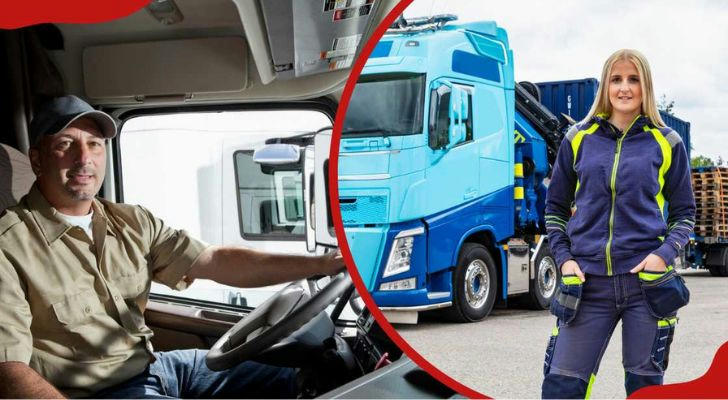Unlock Your Future: Why Truck Driving is America’s Hidden Gem for Career Growth
The hum of a diesel engine, the freedom of the open road, and a paycheck that outpaces the national average—these aren’t just perks of truck driving; they’re the foundation of a career that’s quietly reshaping the American workforce. With over 2.2 million jobs in 2023 and a projected 240,300 annual openings through 2033, the trucking industry isn’t just surviving—it’s thriving. Whether you’re a recent graduate tired of entry-level gigs or a mid-career professional seeking stability, the $54,320 median annual wage for heavy truck drivers offers a compelling alternative to traditional office jobs. Let’s explore why now is the perfect time to shift gears and steer your career toward this high-demand field.

The Road to Six Figures: How Truck Drivers Outearn the Average American
While the median wage sits at $54,320, top earners in states like Texas and California routinely clear $80,000 annually—even without overtime. The secret? Specialization. Hauling hazardous materials or operating oversized loads can push hourly rates to $35-$40, while owner-operators (self-employed truckers) often net $100,000+ by leasing their rigs to freight brokers. Compare this to the $48,060 median wage for all U.S. occupations, and the financial upside becomes undeniable.
Take Sarah Martinez, a former retail manager from Phoenix. After a 4-month CDL program at a local community college, she joined a refrigerated freight company hauling produce coast-to-coast. Her first-year earnings: $68,000. “I doubled my income while trading fluorescent lights for sunrises over the Rockies,” she says.
No Degree? No Problem: The 90-Day Path to a CDL
Forget four-year degrees and student debt. Trucking’s biggest barrier to entry—the Commercial Driver’s License (CDL)—requires just 3-6 months of training. Federally accredited programs like those at Roadmaster Drivers School or community colleges cost $3,000-$7,000, with many employers offering tuition reimbursement. The process?
1.re-screen: Pass a DOT physical and drug test (employers often cover costs).
2.Classroom Training: Master safety protocols, trip planning, and cargo securement.
3.Behind-the-Wheel: Log 40+ hours driving tractor-trailers under instructor supervision.
4.CDL Exam: Test on vehicle inspections, basic controls, and on-road driving.
“We’ve placed graduates with Amazon Freight Partners within two weeks of certification,” notes James Carter, lead instructor at Dallas CDL Academy. “The demand is so high, companies are offering $5,000 sign-on bonuses for new drivers.”
Where the Jobs Are: Top States for Trucking Salaries
Geography plays a massive role in earning potential. While Texas leads in total jobs (158,960 positions), the highest wages cluster in energy and tech hubs:
| State | Annual Mean Wage (2023) | Key Industries Hiring |
|---|---|---|
| California | $63,150 | Port logistics, tech freight |
| Alaska | $62,210 | Oilfield equipment, remote hauls |
| Washington | $61,390 | Aerospace, Amazon/e-commerce |
Source: Occupational Employment Statistics
Rural routes also offer hidden advantages. Drivers covering Nebraska’s agricultural corridors or North Dakota’s Bakken oil region often receive per-diems for overnight trips, adding $50-$75 daily tax-free.
Autonomy Meets Innovation: The Tech-Driven Future of Trucking
Critics claim automation will kill trucking jobs, but the reality is more nuanced. While autonomous trucks may dominate highways by 2040, the Bureau of Labor Statistics still projects 102,000 new driver jobs by 2033. Why?
Last-Mile Deliveries: Robots can’t navigate NYC alleys or construction sites—yet.
Specialized Freight: Oversized wind turbine blades and delicate pharmaceuticals need human handlers.
Hybrid Roles: Today’s drivers are evolving into “transportation managers” using AI tools like CloudTrucks’ load optimization software to maximize profits.
“My rig’s dashboard looks like a spaceship now,” laughs veteran driver Marcus Green. “Between lane-assist tech and real-time fuel apps, I’m safer and earning 15% more per mile than five years ago.”
Your Next Move: Timing is Everything
With 41% of current drivers aged 45+ nearing retirement, the industry’s worker gap could hit 160,000 by 2030. This isn’t just a job—it’s a generational shift. Companies are scrambling to attract younger, tech-savvy drivers with perks like:
•Pet-friendly cabs
•Guaranteed home weekends
•Paid streaming subscriptions for long hauls
Don’t let analysis paralysis park your potential. As supply chain expert Dr. Lisa Monroe notes, “Every day delayed is $200-$500 in unrealized income. The CDL isn’t a certificate—it’s a golden ticket to recession-proof work.”
The highway to financial freedom starts here. Will you merge into the fast lane?
Sources
